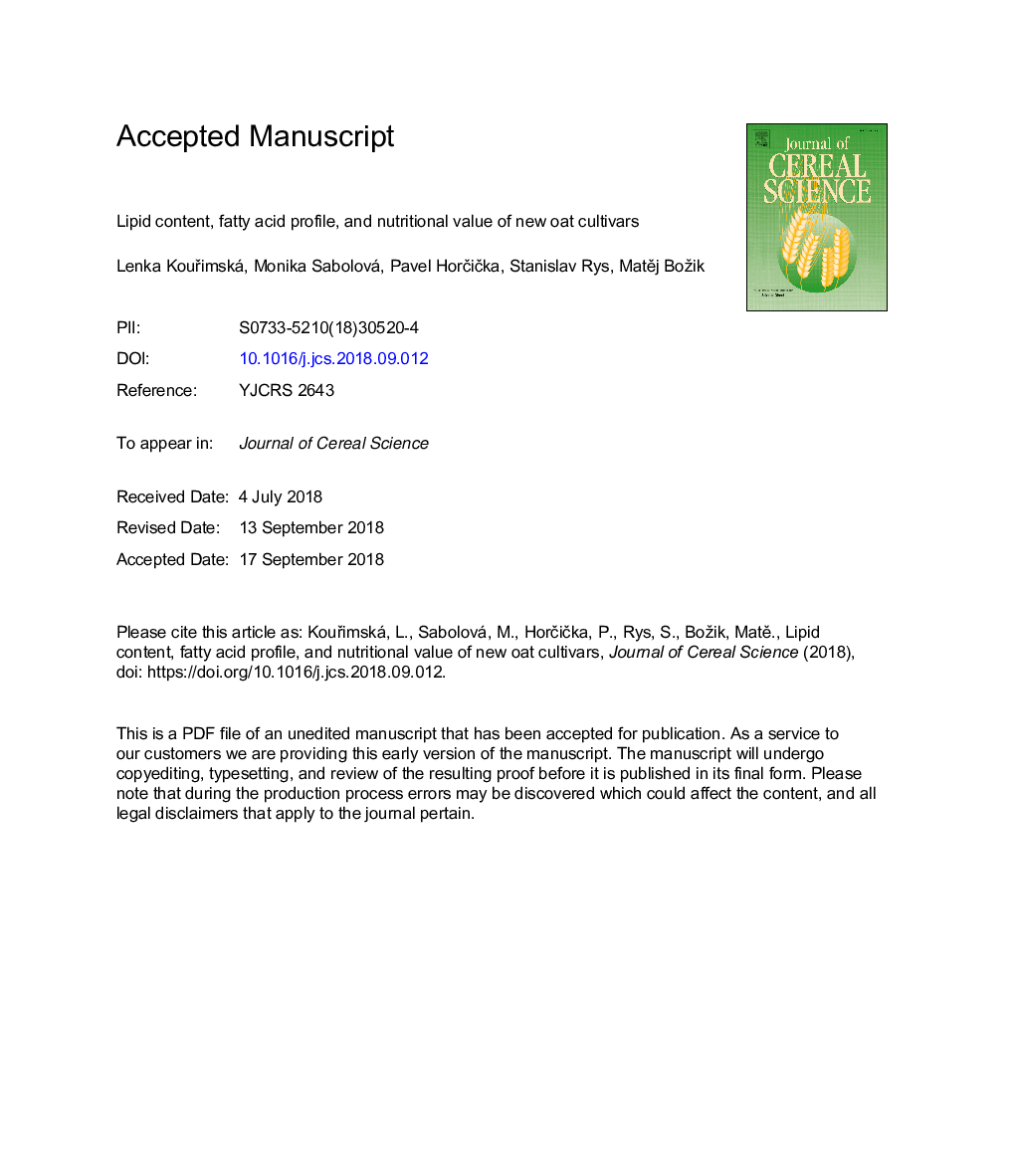| Article ID | Journal | Published Year | Pages | File Type |
|---|---|---|---|---|
| 11012993 | Journal of Cereal Science | 2018 | 17 Pages |
Abstract
Oat is a cereal with a long history of cultivation and great importance in human nutrition, not only because of its starch and protein content, but also because of its substantial fat content with a relatively high proportion of unsaturated fatty acids. The fat content, fatty acid composition, and nutritional value of six new oat cultivars were evaluated. Total fat content ranged from 2.9â¯g/100â¯g (Korok) to 6.1â¯g/100â¯g of sample (Kamil). Naked oat cultivars had significantly higher fat content than hulled oat cultivars (pâ¯<â¯0.0001). The most abundant fatty acids in all tested oat cultivars were linoleic (34.6-38.2%), oleic (30.7-32.2%), and palmitic acid (21.4-22.7%). Naked cultivars had significantly higher amounts of linoleic (pyellowâ¯=â¯0.0125, pblackâ¯=â¯0.0472) and lower amounts of palmitic acid (pyellowâ¯=â¯0.0019, pblackâ¯=â¯0.0031) than hulled oat cultivars. All analysed oat samples had low atherogenic (0.17-0.19) and thrombogenic indices (0.30-0.34). These findings indicate that the tested new cultivars could be a good source of nutritionally valuable oil that plays an important role in the prevention of cardiovascular diseases.
Keywords
Related Topics
Life Sciences
Agricultural and Biological Sciences
Agronomy and Crop Science
Authors
Lenka KouÅimská, Monika Sabolová, Pavel HorÄiÄka, Stanislav Rys, MatÄj Božik,
